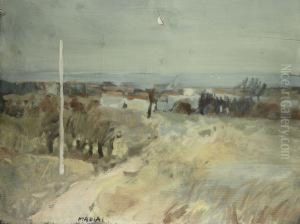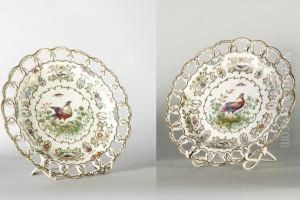Sante Piatti Paintings
Sante Piatti was an Italian painter, born in 1846 in the picturesque region of Friuli, Italy. He was part of the 19th-century European art movement, contributing to the rich tapestry of Italian art during a period marked by significant cultural and political transformation in Italy. Not as widely recognized as some of his contemporaries, Piatti nonetheless carved out a distinctive niche for himself with his unique style and thematic preferences.
Piatti's artistic journey began in his youth, inspired by the rich cultural heritage of his homeland. He pursued formal art education, which was a norm among aspiring artists during that period, enabling him to refine his technique and develop a deeper understanding of artistic principles. Throughout his career, Piatti remained deeply influenced by the Italian landscape and the everyday lives of its people, themes that are recurrent in his works.
Although Piatti's oeuvre includes a variety of subjects, he is particularly noted for his landscapes and genre scenes. His landscapes often depict the serene and bucolic countryside of Italy, imbued with a sense of tranquility and timeless beauty. These works not only showcase his mastery of color and composition but also reflect his profound connection to nature and his homeland. On the other hand, his genre scenes offer a glimpse into the daily life of Italian peasants and townsfolk, capturing moments of joy, sorrow, and the simplicity of rural life with empathy and realism.
Throughout his career, Piatti exhibited his works in various Italian cities, gaining recognition and accolades for his contributions to Italian art. Despite facing the challenges common to artists of his time, including the shifting trends in art and the struggle for financial stability, Piatti's dedication to his craft never wavered. His works continued to evolve, displaying his versatility and ability to adapt to new artistic currents while maintaining his distinctive voice.
Sante Piatti passed away in 1903, leaving behind a legacy that, though not as widely celebrated as that of some of his peers, is cherished among art historians and collectors who appreciate the subtlety and depth of his artistic vision. Today, his works can be found in various Italian museums and private collections, serving as a testament to his skill and dedication to capturing the essence of Italian life and landscapes.

